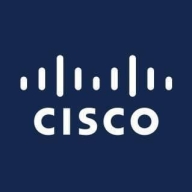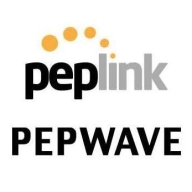


Peplink SpeedFusion and Cisco Catalyst SD-WAN offer powerful SD-WAN solutions. While Cisco Catalyst SD-WAN is equally popular for its advanced features, Peplink SpeedFusion outpaces in affordability and customer support.
Features: Peplink SpeedFusion is renowned for its comprehensive bonding technology, seamless integration, and user-friendly interface. Cisco Catalyst SD-WAN impresses with robust security features, extensive policy control options, and enhanced traffic management capabilities.
Room for Improvement: Peplink SpeedFusion could enhance its scalability options, provide more in-depth analytics, and improve its failover mechanisms. Cisco Catalyst SD-WAN would benefit from simpler initial configuration processes, improved documentation, and a more streamlined update system.
Ease of Deployment and Customer Service: Peplink SpeedFusion is recognized for its straightforward deployment process and responsive customer support. Cisco Catalyst SD-WAN, though powerful, presents a steeper learning curve but is backed by reliable customer service.
Pricing and ROI: Peplink SpeedFusion offers a budget-friendly setup, translating to a quicker ROI for users managing tight budgets. Cisco Catalyst SD-WAN, while having a higher initial cost, is seen as delivering substantial long-term ROI through its extensive feature set.
Clients are now comfortable and not wasting productive hours on IT support.
The automation part is giving us a cost benefit and speed; we can react faster.
It's a very useful tool to mitigate and protect your enterprise.
They are now back to do that with the remainder of their company, so they've realized the value in 12 months and are willing to invest in the remainder of their organization.
The quick resolution of issues with Fortinet FortiGate is due to the support of the company and the fact that the equipment is easy to work with.
I would rate the technical support for Fortinet FortiGate a ten out of ten.
As a solution provider, when I encounter problems, I connect directly with Fortinet support, and they provide solutions within a very short time.
The principal third-level support is very good.
I would consider Cisco support a 10 out of 10.
I would rate Cisco's support, their customer service, and technical support as excellent.
They scale up really well from smaller models like the FortiGate 40 and 50 to bigger sites with the FortiGate 100 for more throughput - up to enterprise datacenters.
The variation comes in terms of the interfaces and throughputs, but from a security perspective, you get the same benefit, irrespective of whether you have an entry-level unit or an enterprise.
We determine sizing based on multiple factors: number of users, available links, traffic types, server count, services in use, and whether services will be published.
Cisco SD-WAN is highly scalable and can be expanded to more than 10,000 sites.
The ease of configuration and features like zero-touch provisioning enhance the scalability of Cisco SD-WAN, especially in disaster recovery situations.
We're experiencing 99.999% availability consistently.
I would rate the stability of Fortinet FortiGate a ten out of ten.
Currently, we are experiencing a general outage of one of the main internet service providers of the Dominican Republic, and we have not been impacted in our operations because with SD-WAN, we have another internet service provider and we are working with the second WAN connection without any disruption.
While some software-related issues and bugs were encountered, they did not cause the whole environment to crash.
When considering Sophos XG, which we also use, the logging and reporting functionality is notably more efficient.
These sessions should be around five to ten minutes long, allowing users and partners to quickly grasp the information without disrupting their daily tasks.
The solution should be able to implement machine learning and analytics of all the logs for threat detection and protection.
Now, they change frequently, making it difficult to obtain long-term support.
Including more features like integrating with Splunk for monitoring vulnerabilities would help eliminate the need for other SOC solutions.
The negative, or the downside of Cisco is the knowledge base; you need to be a little bit more tech-savvy and network-savvy to work with Cisco, while Juniper is a lot more user-friendly from what I can see, especially in terms of configuration and any kind of roll back.
Last year, I renewed the support for three years, which can sometimes be expensive but depends on the security benefits and how it helps us.
It offers cost savings as it is generally cheaper than the competition.
It is about 20% cheaper.
Its pricing is justifiable due to the comprehensive solution it offers.
It is also relatively cost-effective for smaller businesses when using the Meraki version.
The pricing of Cisco Catalyst SD-WAN is rated between eight and nine out of ten, where ten is the most expensive.
These features help reduce our downtime, manage the ISPs, and deploy SLAs for all the website traffic.
The most valuable feature of FortiGate is FortiView which provides proactive monitoring.
We got a firewall and gave an SSL VPN to my client to connect to their servers, after which, such kind of activities involving ransomware attacks stopped.
It also provides robust security features, including port security, analysis, mirroring, and multiple other security solutions.
Cisco Catalyst SD-WAN has integrated security features which include base firewall, URL filtering, IPS, and secure segmentation.
Integration capabilities provide comprehensive security.
| Product | Market Share (%) |
|---|---|
| Fortinet FortiGate | 13.9% |
| Cisco Catalyst SD-WAN | 11.2% |
| Peplink SpeedFusion | 5.0% |
| Other | 69.9% |


| Company Size | Count |
|---|---|
| Small Business | 357 |
| Midsize Enterprise | 133 |
| Large Enterprise | 188 |
| Company Size | Count |
|---|---|
| Small Business | 44 |
| Midsize Enterprise | 15 |
| Large Enterprise | 43 |
| Company Size | Count |
|---|---|
| Small Business | 4 |
| Midsize Enterprise | 2 |
| Large Enterprise | 1 |
Fortinet FortiGate is a versatile network security tool offering features like VPN, firewall, web filtering, intrusion prevention, and scalability. It is known for its performance and integration with other Fortinet products, making it a preferred choice for robust cybersecurity.
Fortinet FortiGate stands out as a comprehensive cybersecurity solution with strong performance and ease of configuration. It delivers unified threat management, integrating features such as dynamic routing, SD-WAN support, and centralized management. Despite its strengths, improvements in the web interface's stability, pricing structures, and reporting capabilities are needed. Users seek better integration with third-party tools and automation advancements to enhance the experience further. These enhancements, alongside improvements in bandwidth management and the reduction of licensing costs, are points of interest for users looking to capitalize on FortiGate's extensive capabilities.
What are Fortinet FortiGate's key features?Fortinet FortiGate is widely implemented across industries as a primary firewall system for securing internet gateways and safeguarding data centers. It supports businesses in achieving SD-WAN integration and enhances cybersecurity by providing essential features like antivirus, web filtering, and application control. Enterprises utilize FortiGate for securing remote connections and ensuring compliance with security standards, making it adaptable for different network sizes and industries.
Cisco Catalyst SD-WAN offers centralized management and integrates seamlessly with existing Cisco ecosystems. It simplifies deployment with zero-touch provisioning, delivering robust security and optimized application routing.
Cisco Catalyst SD-WAN provides essential capabilities for organizations seeking secure remote connectivity and cost reduction, notably through its support of hybrid environments. While pricing and complexity present challenges, its advanced application control and cloud compatibility make it a valuable asset for connecting branches and data centers. Users benefit from enhanced security, network assurance, and simplified management, driving operational efficiency.
What are the key features of Cisco Catalyst SD-WAN?In banking, retail, and enterprise sectors, Cisco Catalyst SD-WAN facilitates effective network management by enhancing connectivity between branches and data centers. Its security features and zero-touch deployment are particularly valued, providing scalable solutions for locations that demand reliable, application-prioritized networking.
Peplink’s patent-pending SpeedFusion technology powers enterprise VPNs that tap into the bandwidth of up to 13 low-cost cable, DSL, 3G/4G/LTE, and other links connected anywhere on your corporate or institutional WAN. Whether you’re transferring a few documents or driving realtime POS data, video feeds, and VoIP conversations, SpeedFusion pumps all your data down a single fat datapipe that’s budget-friendly, ultra-fast, and easily configurable to suit any networking environment.
We monitor all Software Defined WAN (SD-WAN) Solutions reviews to prevent fraudulent reviews and keep review quality high. We do not post reviews by company employees or direct competitors. We validate each review for authenticity via cross-reference with LinkedIn, and personal follow-up with the reviewer when necessary.